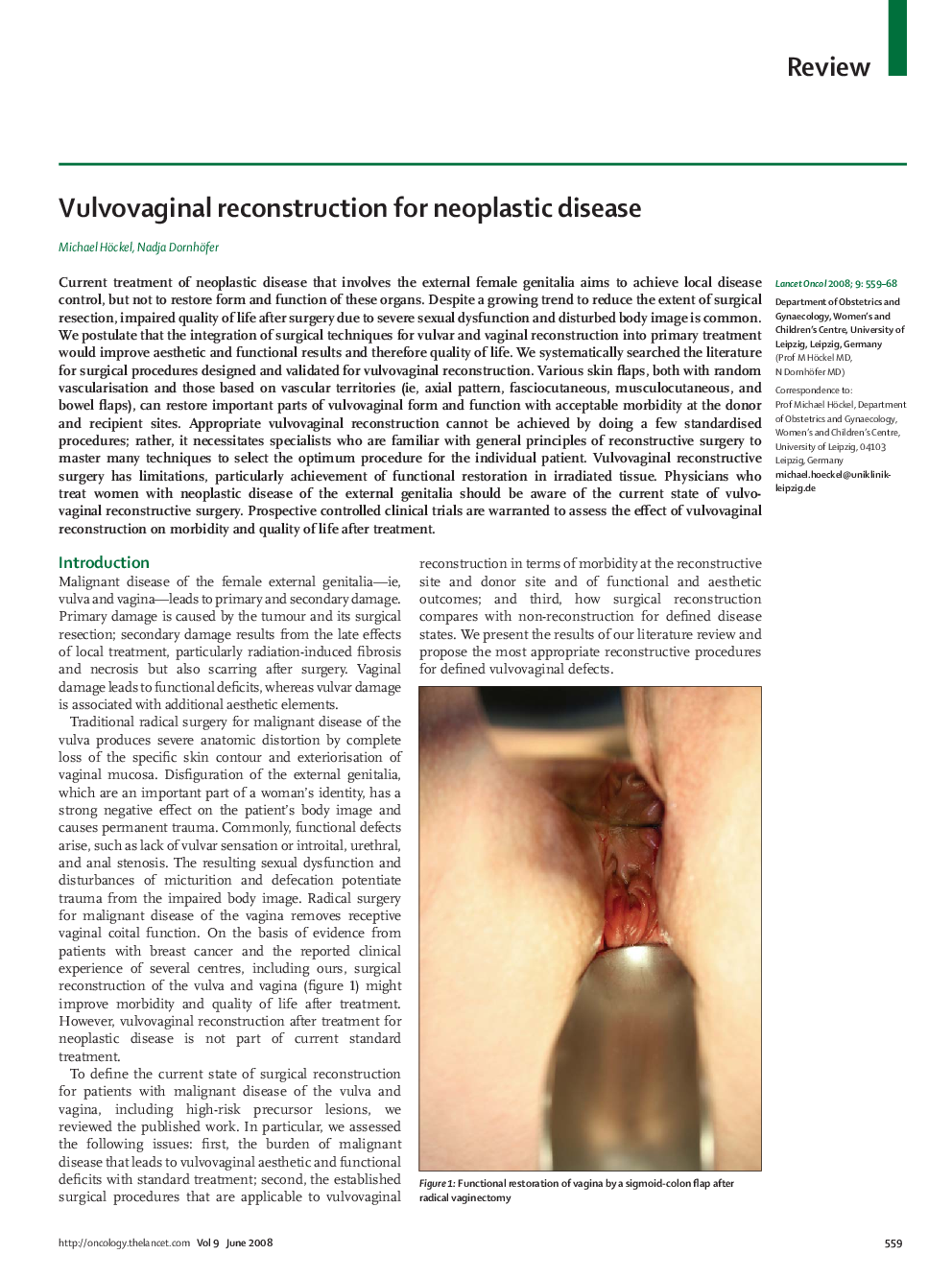| Article ID | Journal | Published Year | Pages | File Type |
|---|---|---|---|---|
| 3994845 | The Lancet Oncology | 2008 | 10 Pages |
SummaryCurrent treatment of neoplastic disease that involves the external female genitalia aims to achieve local disease control, but not to restore form and function of these organs. Despite a growing trend to reduce the extent of surgical resection, impaired quality of life after surgery due to severe sexual dysfunction and disturbed body image is common. We postulate that the integration of surgical techniques for vulvar and vaginal reconstruction into primary treatment would improve aesthetic and functional results and therefore quality of life. We systematically searched the literature for surgical procedures designed and validated for vulvovaginal reconstruction. Various skin flaps, both with random vascularisation and those based on vascular territories (ie, axial pattern, fasciocutaneous, musculocutaneous, and bowel flaps), can restore important parts of vulvovaginal form and function with acceptable morbidity at the donor and recipient sites. Appropriate vulvovaginal reconstruction cannot be achieved by doing a few standardised procedures; rather, it necessitates specialists who are familiar with general principles of reconstructive surgery to master many techniques to select the optimum procedure for the individual patient. Vulvovaginal reconstructive surgery has limitations, particularly achievement of functional restoration in irradiated tissue. Physicians who treat women with neoplastic disease of the external genitalia should be aware of the current state of vulvovaginal reconstructive surgery. Prospective controlled clinical trials are warranted to assess the effect of vulvovaginal reconstruction on morbidity and quality of life after treatment.
